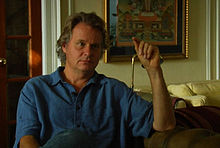
Tetrodotoxin (TTX) is a potent neurotoxin. Its name derives from Tetraodontiformes, an order that includes pufferfish, porcupinefish, ocean sunfish, and triggerfish; several of these species carry the toxin. Although tetrodotoxin was discovered in these fish, it is found in several other animals. It is also produced by certain infectious or symbiotic bacteria like Pseudoalteromonas, Pseudomonas, and Vibrio as well as other species found in symbiotic relationships with animals and plants.
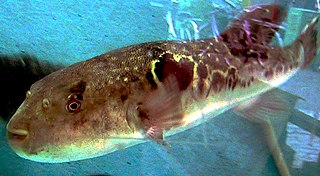
The fugu in Japanese, bogeo or bok (복) in Korean, and hétún in Standard Modern Chinese is a pufferfish, normally of the genus Takifugu, Lagocephalus, or Sphoeroides, or a porcupinefish of the genus Diodon, or a dish prepared from these fish.

The Centre for Geography and Exploration, located at 50 Sussex Drive in Ottawa, is headquarters to the Royal Canadian Geographical Society (RCGS) and home to Canadian Geographic magazine, as well as Can Geo Education and special project departments.

Richard Evans Schultes was an American biologist, considered to be the father of modern ethnobotany. He is known for his studies of the uses of plants by indigenous peoples, especially the indigenous peoples of the Americas. He worked on entheogenic or hallucinogenic plants, particularly in Mexico and the Amazon, involving lifelong collaborations with chemists. He had charismatic influence as an educator at Harvard University; several of his students and colleagues went on to write popular books and assume influential positions in museums, botanical gardens, and popular culture.

The Rainbow Serpent or Rainbow Snake is a common deity often seen as the creator God, known by numerous names in different Australian Aboriginal languages by the many different Aboriginal peoples. It is a common motif in the art and religion of many Aboriginal Australian peoples. Much like the archetypal mother goddess, the Rainbow Serpent creates land and diversity for the Aboriginal people, but when disturbed can bring great chaos.
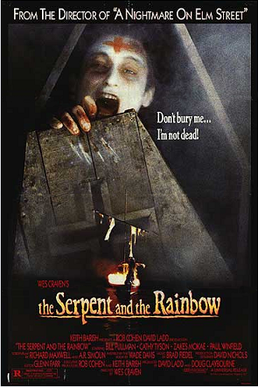
The Serpent and the Rainbow is a 1988 American horror film directed by Wes Craven and starring Bill Pullman. The script by Richard Maxwell and Adam Rodman is loosely based on the non-fiction book of the same name by ethnobotanist Wade Davis, wherein Davis recounted his experiences in Haiti investigating the story of Clairvius Narcisse, who was allegedly poisoned, buried alive, and revived with a herbal brew which produced what was called a zombie.
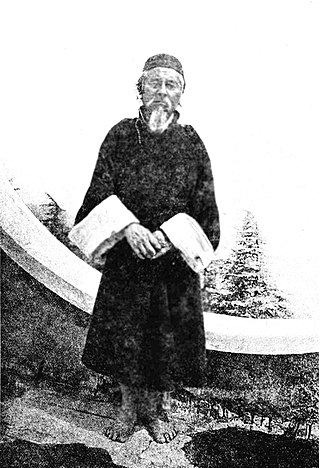
The term pundit was used in the second half of the 19th century to denote native Indian surveyors used by the British to secretly explore regions north of British India. The Pundit was the code-name for one of the first native explorers, Nain Singh, who was originally a schoolteacher. His accomplishments were so remarkable that the whole group of around twenty native explorers became known as the Pundits.
Clairvius Narcisse was a Haitian man who claimed to have been turned into a zombie by a Haitian vodou, and forced to work as a slave.

The Royal Canadian Geographical Society is a Canadian nonprofit educational organization. It has dedicated itself to spreading a broader knowledge and deeper appreciation of Canada, including its people, places, natural and cultural heritage, as well as its environmental, social and economic challenges.
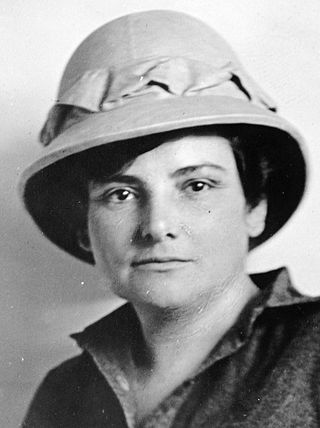
Harriet Chalmers Adams was an American explorer, writer and photographer. She traveled extensively in South America, Asia and the South Pacific in the early 20th century, and published accounts of her journeys in National Geographic magazine. She lectured frequently on her travels and illustrated her talks with color slides and movies.
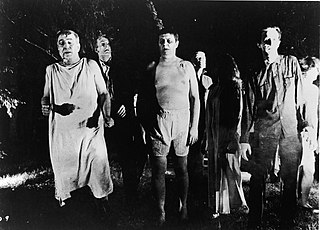
A zombie is a mythological undead corporeal revenant created through the reanimation of a corpse. In modern popular culture, zombies are most commonly found in horror and fantasy genre works. The term comes from Haitian folklore, in which a zombie is a dead body reanimated through various methods, most commonly magical practices in religions like Vodou. Modern media depictions of the reanimation of the dead often do not involve magic but rather science fictional methods such as carriers, fungi, radiation, mental diseases, vectors, pathogens, parasites, scientific accidents, etc.
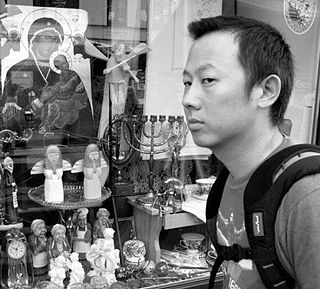
Patrick Shen is an American writer, director, and producer. Shen is the founder of Transcendental Media.
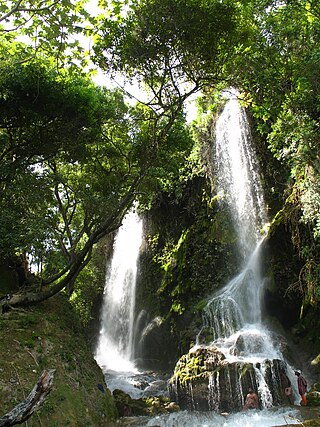
Saut-d'Eau is a commune in the Mirebalais Arrondissement, in the Centre department of Haiti. It has 34,885 inhabitants.

The Serpent and the Rainbow: A Harvard Scientist's Astonishing Journey into the Secret Societies of Haitian Voodoo, Zombies, and Magic is a 1985 book by anthropologist and researcher Wade Davis. He investigated Haitian Vodou and the process of making zombies. He studied ethnobotanical poisons, discovering their use in a reported case of a contemporary zombie, Clairvius Narcisse.

A zombie film is a film genre. Zombies are fictional creatures usually portrayed as reanimated corpses or virally infected human beings. They are commonly portrayed as cannibalistic in nature. While zombie films generally fall into the horror genre, some cross over into other genres, such as action, comedy, science fiction, thriller, or romance. Distinct subgenres have evolved, such as the "zombie comedy" or the "zombie apocalypse". Zombies are distinct from ghosts, ghouls, mummies, Frankenstein's monsters or vampires, so this article does not include films devoted to these types of undead.
Max Gesner Beauvoir was a Haitian biochemist and houngan. Beauvoir held one of the highest titles of Voudou priesthood, Ati or "Supreme Serviteur", a title given to Houngans and Mambos who have a great and very deep knowledge of the religion, and status within the religion. As Supreme Serviteur, Max was seen as a high authority within Vodou.
K. David Harrison is a Canadian and American linguist, anthropologist, author, filmmaker, and activist for the documentation and preservation of endangered languages.

Hadriana in All My Dreams is a 1988 magical realism novel by Haitian author René Depestre. It is considered a major work of 20th century Haitian literature, and possibly Depestre's most successful work.

The Magic Island is a book by American explorer and traveler William Seabrook. First published in 1929 by Harcourt, Brace & Company, The Magic Island is an account of Seabrook's experiences with Haitian Vodou in Haiti, and is considered the first popular English-language work to describe the concept of a zombie, defined by Seabrook as "a soulless human corpse, still dead, but taken from the grave and endowed by sorcery with a mechanical semblance of life—it is a dead body which is made to walk and act and move as if it were alive."
